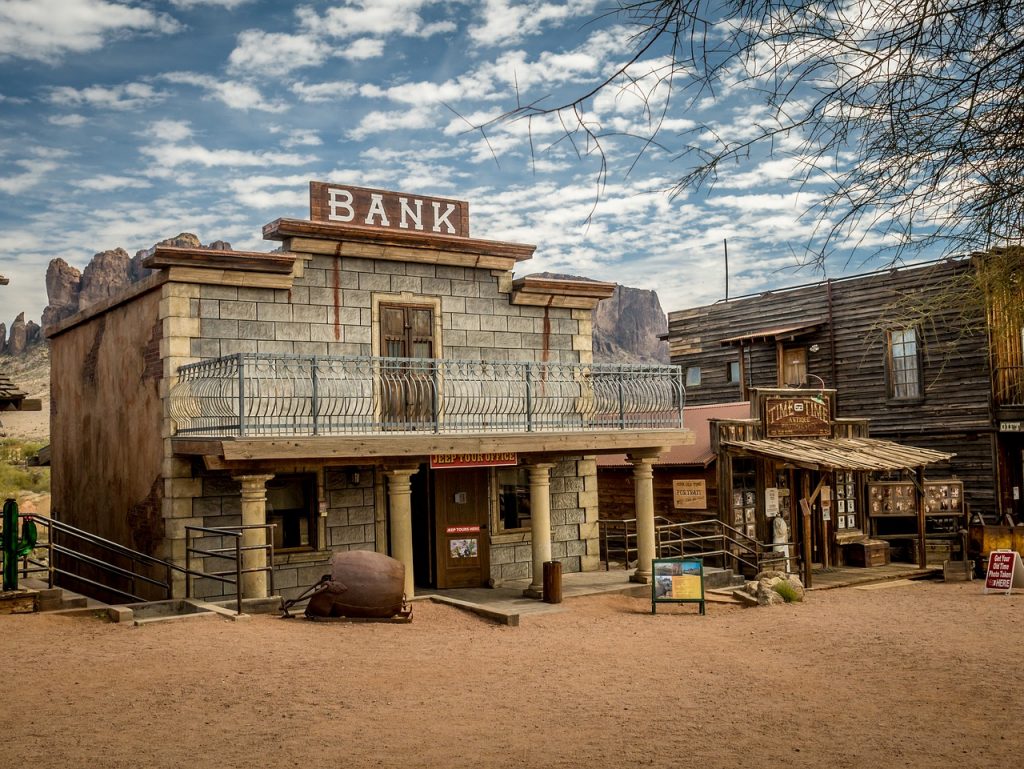The American Ghost Town Posted by Gary Locke on Jul 19, 2018 in Culture, News
Did you know that, in the US, it is possible to buy an entire town? Recently, two friends managed to do just that. For $1.4 million, they purchased Cerro Gordo, California. It consists of 300 acres, abandoned homes, a saloon, a two-story hotel, a general store, a museum, an eight-bedroom bunkhouse, a church which also serves as a theatre, and even (reportedly) a ghost or two. At the time of the purchase the town also housed just one living resident, the town’s caretaker.
Cerro Gordo is a ghost town, a settlement which has been abandoned because of economic hardship or some natural or man-made disaster. A town becomes a ghost town when there is no longer a reason for the town to exist. There are hundreds of ghost towns in the United States. In many cases, there is very little remaining. Just a few building foundations, or evidence of streets and maybe an abandoned vehicle will serve as reminders of what once had been. You can drive through the upper Midwestern states and come upon a barn which stubbornly still sits in the middle of nowhere. At one time, that barn had been part of a thriving farm community, now nature has claimed almost all of it.
Boom or Bust
Very often, ghost towns are the result of economic conditions. If gold, silver, or copper was discovered in a location, communities rose up around the mines. These are called boomtowns, because they suddenly take shape within a few months, with an explosion of activity due to the sudden prosperity. Quiet campsites transform into towns with streets and businesses for the increased population. And it isn’t just precious metals that can make a boomtown. The expansion of railroads and highways inspire people to seek new opportunities. There was a Texas oil boom in the early part of the 20th century, and North Dakota is experiencing one today.
But, with a boom, there may be a bust. When the mines or oilfields cease to produce, or new roads bypass communities, or a mill factory closes down, the economy suffers. Sometimes a boomtown will shrink just as rapidly as it formed, and all or nearly all of the population will move on, forming a ghost town.
Nature can produce ghost towns. During the great drought of the Southern Plains in the 1930s, called the Dust Bowl because of the massive dust storms caused by heat and erosion, thousands left their farms in order to survive. Sometimes towns form where they shouldn’t. There are numerous examples of towns being built along flood lines, and they must be abandoned.
Past and Future
Cerro Gordo was a mining town. It was founded in 1865 as a silver mine, then later lead was also discovered. It certainly fit in with the Wild West era. In the 1870s, at the height of the mining period, the town averaged about one gunfight a week. In the early 1900s, zinc became the mineral that kept the town alive, but by 1920 only about 10 miners remained in town. The boom had gone bust.
The new owners plan to renovate the town for tourism. The bunkhouse will become a music studio. They want to build an observation deck in town for star gazing. From the hotel balcony, you can see both Mount Whitney and Death Valley. It will become a nostalgic peek into America’s past, and perhaps a successful and thriving landmark.
But, then, it won’t still be a ghost town, will it?

Build vocabulary, practice pronunciation, and more with Transparent Language Online. Available anytime, anywhere, on any device.




